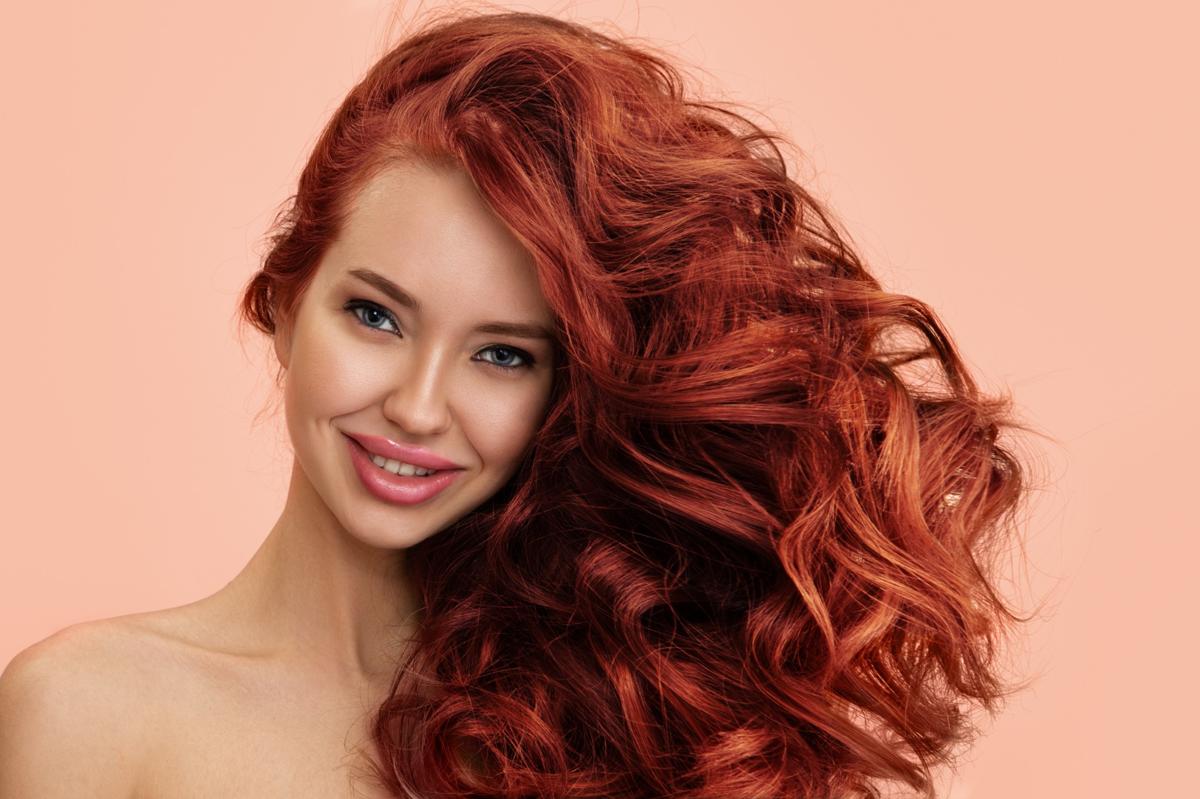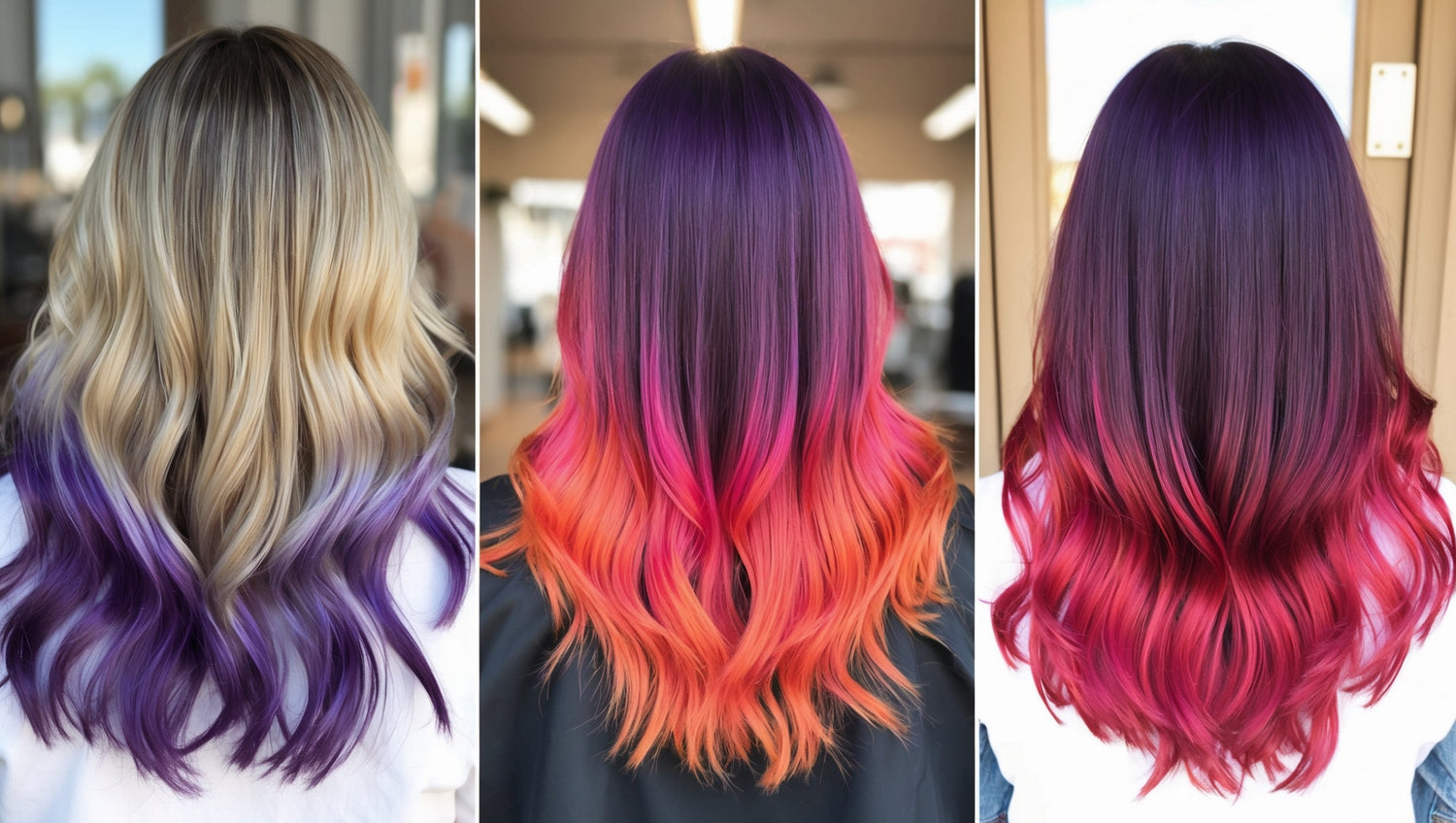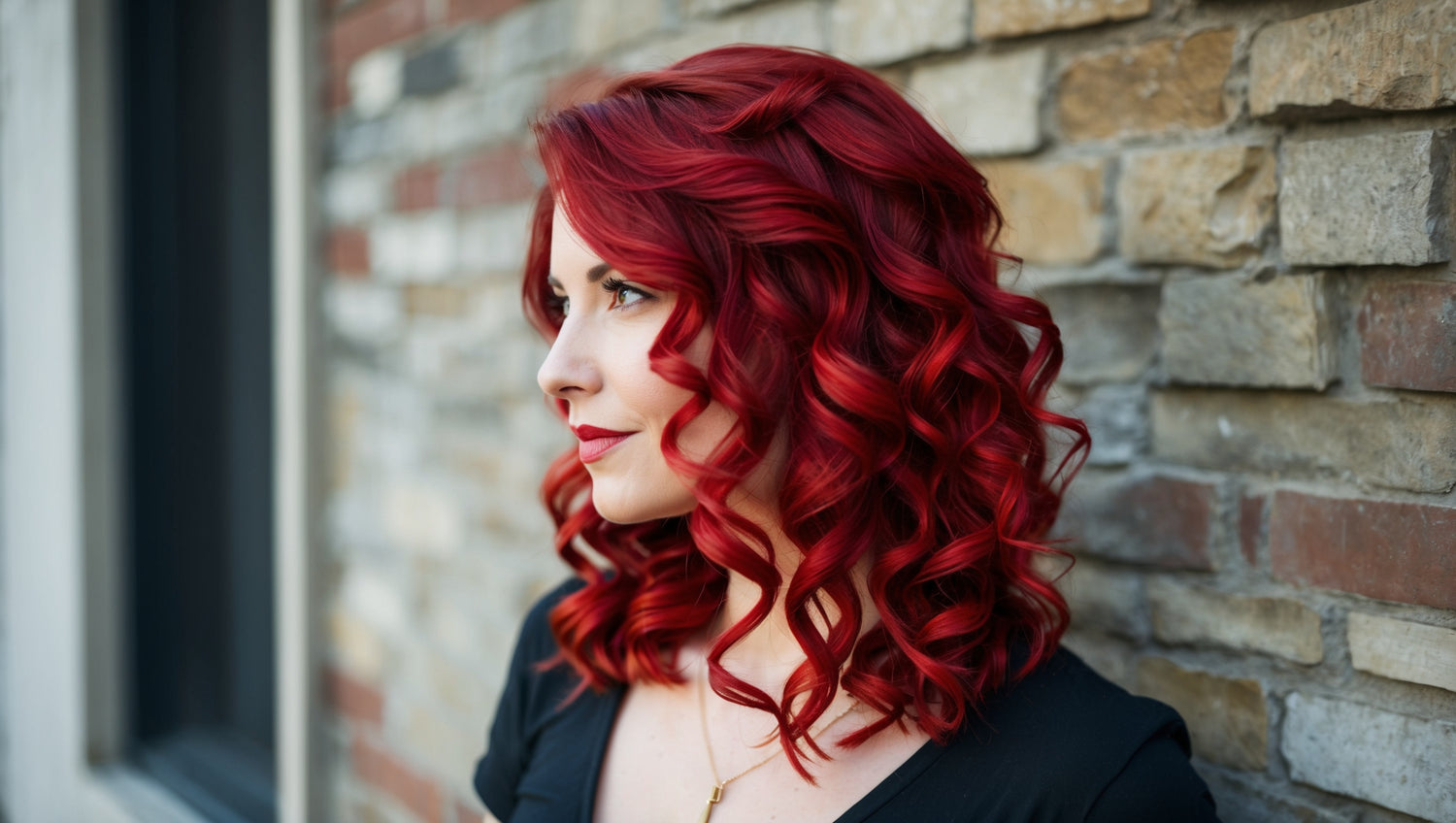Our hair is our sanctuary. It influences how we are perceived by others and underlines our personality. To ensure that your hair always looks healthy and natural, you should follow certain rules when trying out new hairstyles. Hair is not made of steel and needs the right care. Dye your hair correctly - with our tips you will be able to effortlessly switch from one hairstyle to another without having to fear hair loss or other disasters.
HOW OFTEN CAN I COLOR MY HAIR?
Unfortunately, there is no exact answer to this question, as everyone has a different hair structure. For this reason, you should definitely find out about your own. Generally speaking, a distinction is made between fine and thick hair. If you belong to the former category and your hair is very healthy, you can re-dye it after six to eight weeks. If you have thinner, damaged hair, you should wait longer.
Tinting is the "nicer" version of coloring and is less damaging to the hair. It does not penetrate the hair structure and can therefore be repeated every four weeks. But the above also applies here: every hair is different and needs a longer or shorter recovery time depending on the type. Of course, it is ideal to give the hair as much time as possible to regenerate.

Classic coloring penetrates the hair structure and is therefore more damaging. A six-week break is therefore essential. The color often washes out quickly or the shade changes: a bright, rebellious red becomes a washed-out pastel shade. Careless users can then use the color again and ruin their hair. To achieve a long-lasting color result, it is important to use the right products, such as the MeMademoiselle care set for long-lasting and shiny hair colors.
Some people will know that bleaching is particularly aggressive to hair. Just applying it can cause a burning sensation in the scalp. This is due to the chemical substances contained in the hair bleach. Experts advise against subjecting hair that has already been bleached to the same procedure again, but rather to only have the roots re-bleached after six weeks.
WHICH HAIR COLOR SUITS ME?

Not every color suits every guy. Maybe you've seen it before: A friend dyes her hair burgundy red, the color suits her incredibly well and she gets lots of compliments for it. Another likes the look and dyes her hair exactly the same color, but she doesn't get the same "wow" effect. Whether a color suits us depends mainly on two factors: eye color and skin type. These components cannot be considered individually; the overall picture is more important, the interaction of both factors.
WHICH SKIN TYPE?
Determining skin type is a tricky matter for some, but for others it is obvious at first glance. But once you have found out your type, life is much easier. Generally, skin is divided into three types: light, dark and neutral. Now it is best to take a white sheet of paper and hold it next to your outstretched hand. If your skin color looks pink or bluish in contrast to the sheet of paper, then you have a light skin type. If your skin color appears greenish, brownish or yellowish to you, then welcome to the dark types. But if neither one nor the other applies, or you have a mixture of both, you are neutral.
For further guidance, look at the veins on your wrist. If they are purple, you have fair skin. Greenish or turquoise veins indicate that you have dark skin, and a mixture of purple and turquoise veins makes you neutral.
WHICH COLOR SUITS ME?
Now that you know what type you are, we can find out which color suits you best. Let's take the combination of blue eyes and dark skin, for example. These people look good in colors like lavender, chocolate brown, burgundy red or blonde balayage. Why is that? There are basically two things you can do: either you stick to your color palette or you create contrasts. For our dark skin type, the color palette consists of warm colors: golden blonde, chocolate brown, balayage in honey and caramel, greenish, yellowish, autumnal and summery colors. For a light type, it would be cold colors like platinum blonde, black, ash colors, winter colors, violet and blue undertones. Contrasts, on the other hand, can emphasize the eyes or bring out your skin tone. For example, black hair goes with light skin and green eyes, or an ashy blonde goes with tanned skin and gray eyes.
If you have a neutral skin type, we have good news for you: almost all hair colors suit you. You just have to pay attention to one of the two factors - your eye color. Your skin type makes it very easy for you, as it harmonizes with both cold and warm colors.
HOW DO I COLOR MY HAIR MYSELF?

First the basics: It's best to put on an old T-shirt or put a used towel around your neck. Hair dye stains are often very difficult to remove and should be wiped off immediately. To avoid color streaks on your face, apply Vaseline to your ears and facial contours before dyeing. The color should be one or two shades lighter or darker than your natural hair. The best way to do this is to compare a strand of hair with the picture on the back of the packaging. If the right color isn't there, you should use a different hair dye. Also, if you have particularly long or thick hair, you should buy two packages.
The color must be applied to dry hair. It should have been at least a day since you last washed your hair so that your scalp has enough time to rebuild its protective sebum film. Pamper your hair with a hair treatment if you know you are going to dye your hair soon. This will help later on to ensure that the color is evenly distributed.
Now divide your hair into four equal sections. The best way to do this is with a tail comb. First divide your hair into a middle parting and extend it until it reaches your neck. Then draw a horizontal line from one ear to the other. Now you have four equal sections that can be put together into small buns. To color it, undo one of these buns and start coloring the roots with the brush and work your way down to the tips. It's best to get a friend to help you with this.
If a hair accident does occur, you should definitely go to a professional hairdresser. They know best what to do with your hair. Under no circumstances should you experiment with other hair dye products, as this could worsen the color result and cause permanent damage to your hair. For less serious hair accidents, you can use a hair peeling. Nevertheless, the hair should be protected in the near future and supplied with sufficient nutrients. The care set for stressed hair from MeMademoiselle can work wonders here. It will build up your stressed hair for a long time and strengthen it right down to the tips.

HOW DO I DYE MY HAIR BLONDE?

Basically, when you bleach your hair, it is not dyed but lightened. This can be particularly damaging to your hair. But there are now many different techniques for gently getting blonde hair. So which one should you choose?
Compared to other techniques, coloring has minimal damage to your hair. The result may not be as blonde as desired, but it is still worth seeing.
If you want a natural blonde, you should opt for balayage. This involves lightening individual strands by several shades and can be made cooler or warmer as desired. Balayage is definitely gentler than a complete bleaching plus you can save yourself the trouble of re-dyeing the roots.
The Olaplex treatment promises to not only bleach the hair, but also to care for it at the same time. Although this treatment is very expensive and Olaplex hair masks have to be applied at home for several weeks, new blondes still rave about this treatment. So if you want a particularly gentle bleaching, you should definitely try this technique.
Bleaching is probably the most damaging technique of all and you can feel this in your scalp as soon as you apply the bleach. A lot of harmful chemicals are used to lighten the hair as much as possible. The result is beautiful, of course, but the consequences are split ends, dry hair and a high need for care.
If you don't want to go to the hairdresser, you should opt for an intensive tint. Compared to a conventional tint, this lasts longer and, in contrast to coloring, it has less of an effect on your hair structure. The intensive tint lasts six to eight weeks and washes out evenly without leaving any roots.
Unfortunately, dyeing is not the end of the process. For a long-lasting and radiant blonde, the right care is essential - and the right products. All too often, blonde hair suddenly has a yellow tint or orange discoloration after dyeing. Depending on the exposure time, the Anti Yellow Care Set from MeMademoiselle can remove the yellow tint and give your hair a shiny silver color. It leaves no unwanted residue and also cares for your blonde hair.





